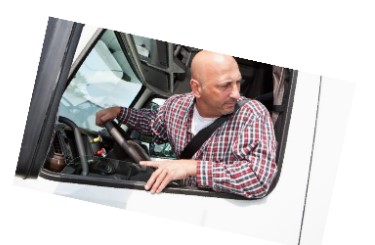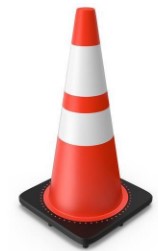(Get out and look)
When backing up must occur, Get Out and Look (GOAL). “Before backing, get out of your cab and walk around your vehicle to look and see what lies between you and your backing destination.
- Nobody on the riding step. Never back your vehicle when someone is riding the rear step. Co-drivers/helpers should be in the cab or standing in a location visible to the driver and wearing high-visibility personal protective equipment.

- Determine space limitations. Is the space wide enough? Is the loading dock platform high or
low enough? Be aware that the path may slope up or down, making it difficult to judge vehicle clearance at your destination point. Measure and determine proper distances vertically and horizontally to safely park or unload the freight.
- Utilize technology. Use your four-way flasher and backup alarm if the vehicle is equipped with these. Periodically tap the horn before backing and as backing continues. Also, utilize any radar or other detection devices, if installed. Assume that other vehicles or individuals do not see you coming.
- Don’t forget to look up. Look for awnings, pipes, framing, fire escapes, wires, etc., that may be in your way. Look up, down, all around, and under the truck before backing. The entire path the vehicle will take must be clear of obstacles. Also, anticipate where another vehicle or pedestrian could hit the rear of the vehicle while you are backing.
- Back slowly and cautiously. Have complete control of your vehicle. Use the lowest possible gear or idle speed, and do not accelerate. Keep in mind that other drivers and pedestrians may be distracted (e.g., using cell phones).
- Use a guide or spotter. While the driver bears the ultimate responsibility for backing safely, it is helpful to use a reliable, well-trained guide or spotter whenever possible to assist when backing. An extra set of eyes could make all the difference, particularly in situations where there are blind spots or when someone or something could come into your path.
- Start backing within a few seconds after check. When you must spot for yourself without a guide, return to the vehicle quickly. This will allow very little time for people and/or obstacles to move behind the vehicle.

- Check area again. Once you are behind the wheel, with the engine running and the vehicle in reverse, check the area again by turning and visually clearing the path that the vehicle will take. Use all side mirrors to constantly check and visually clear your path.
- Blow the horn to warn everyone that you are going to back up, when appropriate, based on location and time of day. Be extra cautious in inclement weather, as pedestrians—especially small children—can slip on ice and snow, becoming lodged underneath a vehicle’s tire.

